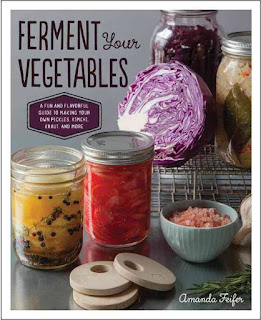My one and only friend Dena has outdone herself again. Her birthday gift to me was Amanda Feifer’s beautiful book Ferment Your Vegetables.
Feifer, the owner of Phickle blog, is a true fermentation enthusiast, and her descriptions of bacteria and biological processes bubble, pun intended, with a vivacious spirit of experiment. She explains the process clearly and helpfully, details the necessary (cheap) equipment (you pretty much already have what you need) and provides dozens of great recipes for different vegetables.
I plan to make pretty much everything in the book! Today I started off with her radishes and onion recipe, modifying it–I can’t seem to make any recipe as written–by adding the beets we have left over from a week of soups and juices. I shall report back on the outcome, but this is basically what I did:
8 radishes
4 beets
1 red onion
2 cups water
4 tbsp salt
I sliced the radishes and beets to a 1/2 inch thickness, tetris-ed them into a jar, then poured the water and salt brine on top. I weighed down the veg with a silicone glass cover, and now we wait.





